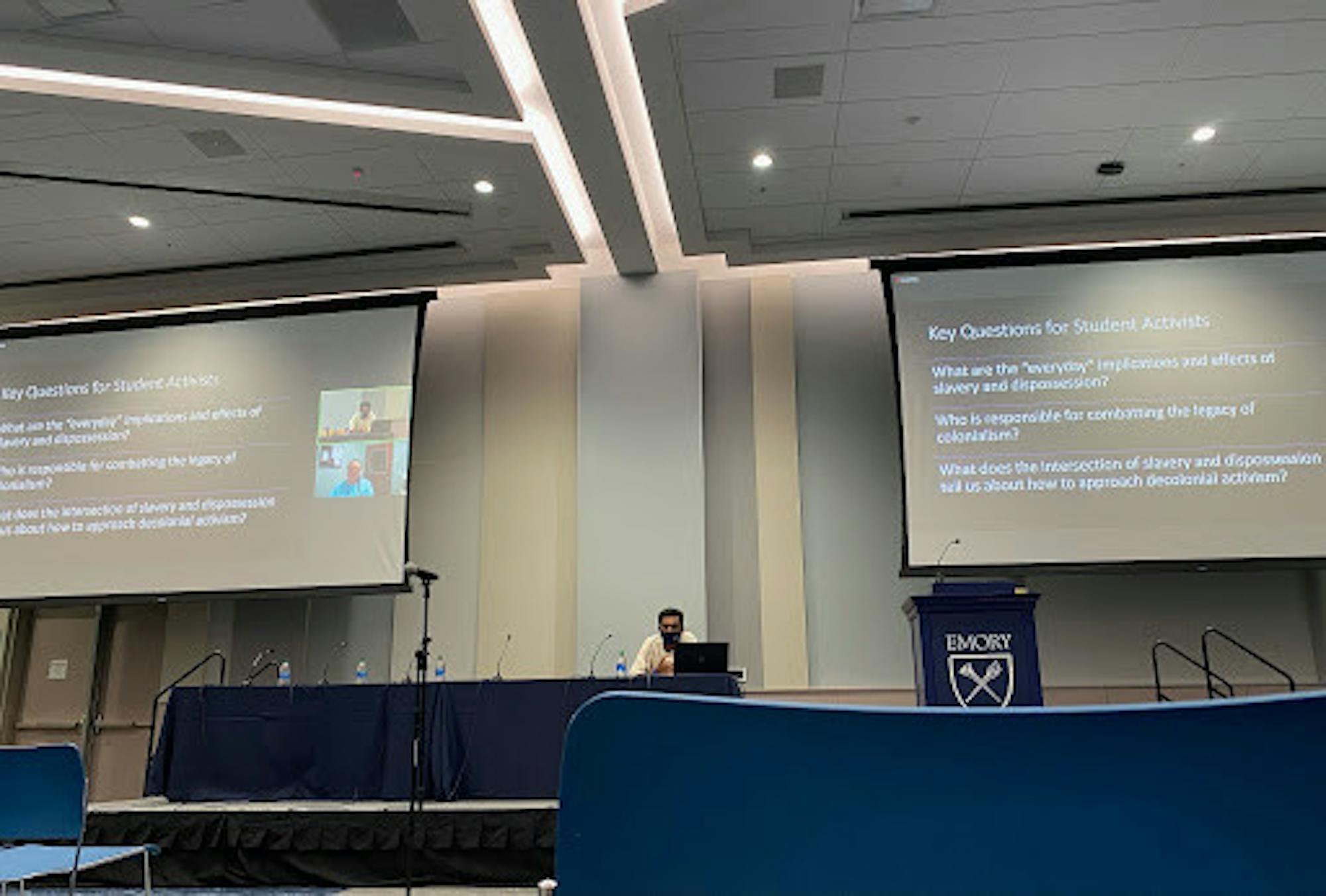For Koan Roy-Meighoo (25C), a panelist at Emory’s recent slavery symposium, there are two hallmarks of student activism: “Connecting yourself to a broader community, rather than just your small circle, and using your power and influence as a young person to empower others.”
An organizer for the Beacon Hill Black Alliance for Human Rights, an organization dedicated to advocating people on systemic racism and oppression, Roy-Meighoo defined student activism at the panel discussion “Student Activism at Emory” on Sept. 30.
This discussion was part of a slew of events the University hosted over its three-day “In the Wake of Slavery and Dispossession” symposium.

Roy-Meighhoo was joined by co-panelist Klamath Henry (19C), who serves as a research librarian at Chachalu Tribal Museum and Cultural Center of Confederated Tribes of Grand Ronde in Portland, Oregon. Henry is a member of the Shasta Tribe of California and Tuscarora Nation of the Haudenosaunee Confederacy.
Henry and Roy-Meighoo took turns discussing the history of student activism at Southern institutions, including Emory, and the importance of recognizing the connection between Black, Native and Latinx histories when fighting for justice-oriented activism.
“Everybody!” Henry exclaimed when asked about who is responsible for combating the legacy of colonialism. Encouraging people to get involved, Henry said “it’s totally OK to ask, ‘what can I do?’”
Roy-Meighoo elaborated on student activism at Emory, noting that “as students, it’s our job to push professors and the institution” toward making positive changes. He continued that “it’s the University’s job in general to ask our community, ‘what do you need from us?’”
Explaining the intersection of slavery and dispossession, Roy-Meighoo argued that both histories are “inseperable” and how that plays a role in his activism.
As a grassroots activist, Roy-Meighoo talked about his work within Atlanta advocacy for the removal of the Lost Cause Monument. The monument was erected in 1908 by the Daughters of the Confederacy, and served to rationalize the Confederacy following the Civil War. Lost cause mythology centered around the belief that slavery was not the central cause of the Civil War.
Roy-Meighoo also shared his contribution toward the newly erected sculpture “What Sonia said” by artist Ellex Swavoni, which was unveiled to the public on Sept. 12.
“This artwork is about the connection between African and Indigenous histories and works to highlight their successes and brilliance, not just their oppression,” Roy-Meighoo explained.
After the panelists addressed broader themes of student activism, repossession and restorative justice, the discussion transitioned to an open forum for people to ask questions.
“Number one, stay strong, but know you don’t have to be strong all the time and you can always ask for help,” Henry said when asked about advice for current Indegnious students at Emory. She discussed how Emory’s cultural resources can help, specifically affinity spaces.
However, some panel attendees expressed their wish for courses at the University to place greater emphasis on student activism.
“I would love for Emory to create structures where students partner with faculty to design courses that have an applied component of activism and engagement as part of the course,” an attendee said.
Emory’s student activism has been deeply rooted in the University’s history and continues to be an important part of the Emory experience. The University seal, a crossed torch and trumpet, represent the dissemination of knowledge and Emory’s role in sharing this with the surrounding community. It’s about asking how the University can help not just the immediate Emory community, but the Atlanta community at large.





